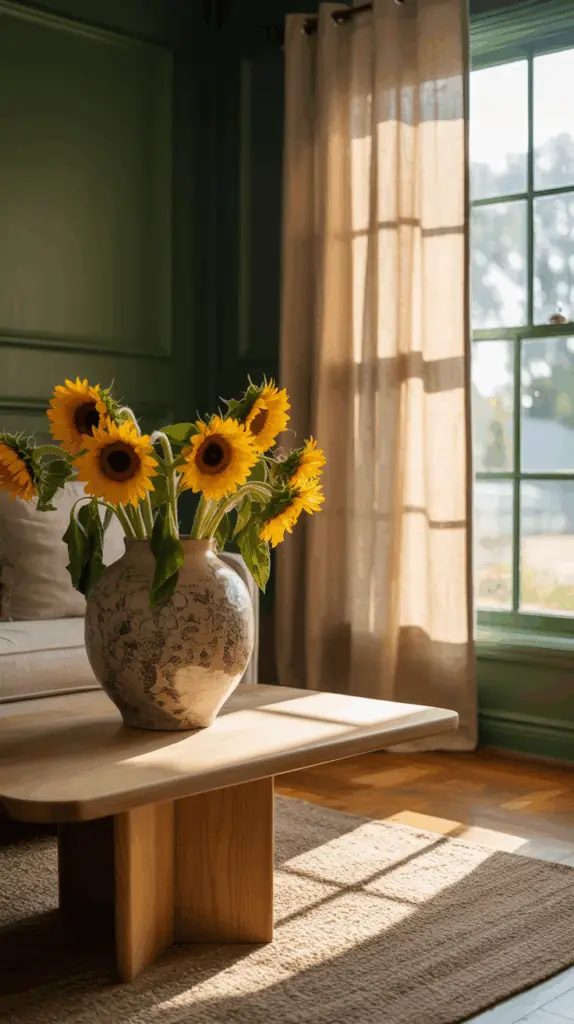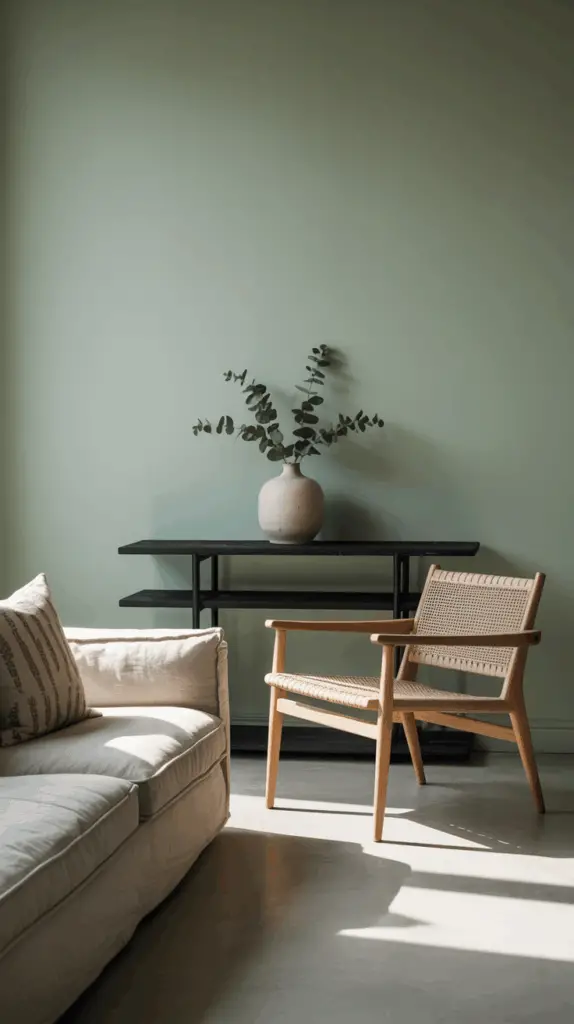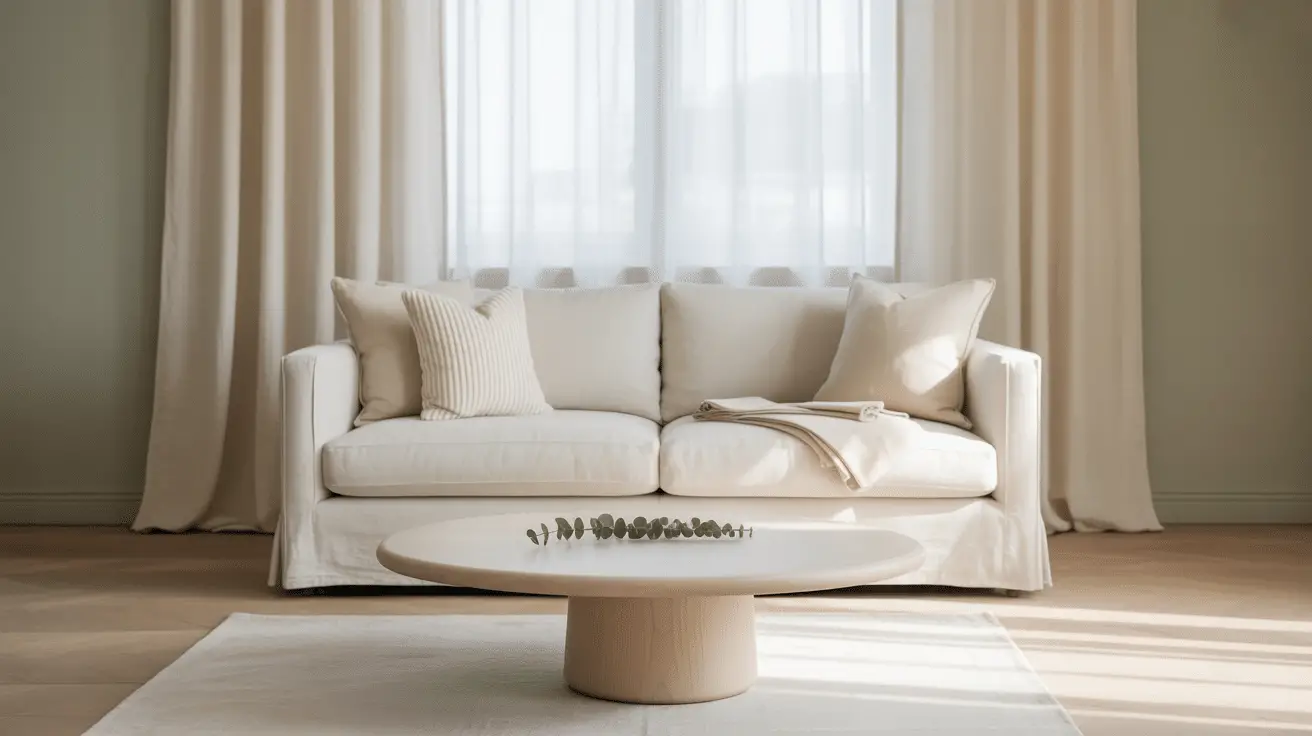Minimalist Green Walls Living Room Ideas for Calm, Nature-Inspired Homes
Table of Contents
Introduction
In a world increasingly dominated by screens, noise, and clutter, our homes have become more than just places to live—they’re our sanctuaries. Now more than ever, interior design is being driven by the desire to create calm, grounded environments that support our well-being. Enter the minimalist green walls living room: a design approach that merges simplicity with the soothing qualities of nature.
Green walls—whether painted, paneled, or brought to life through living plants—bring a quiet depth to interiors. According to a study published in the Journal of Environmental Psychology, green interiors are linked to reduced stress and enhanced relaxation, making them ideal for living spaces where we unwind and recharge. Combine that with a minimalist mindset—clean lines, thoughtful textures, and curated furniture—and you’ve got a recipe for visual peace and emotional balance.
This guide explores ideas and inspiration for incorporating minimalist green walls in your living room, all while keeping the overall look clean, refined, and deeply restful. Whether you’re painting a feature wall in sage, installing vertical garden panels, or styling around botanical tones, you’ll find practical insights here for designing a space that feels both tranquil and timeless.
Choosing the Right Shade of Green for a Minimalist Backdrop
Not all greens are created equal. When curating a minimalist living room with green walls, the key is selecting the right shade—one that’s soft, subdued, and naturally blends into a calm palette. Vibrant lime or neon hues can feel overwhelming in serene settings, so aim for more grounded tones like sage, olive, eucalyptus, or dusty forest.
Soft greens work particularly well with minimalism because they evoke nature without dominating the room. Muted shades of green act almost as a neutral and pair effortlessly with beige, cream, white, soft grays, and even light wood tones. A sage wall, for instance, can serve as a gentle focal point without disrupting a clean-lined aesthetic.
Popular Minimalist Green Wall Shades
| Shade | Undertone | Best Used With |
| Sage | Gray | White, blonde wood, linen textiles |
| Olive | Warm yellow | Terracotta, black accents, tan leather |
| Eucalyptus | Cool blue | White oak, brass, cotton textiles |
| Dusty Forest | Neutral deep green | Warm whites, deep walnut, matte black |
Always test your color in natural and artificial lighting before committing. A green that feels serene in daylight may turn muddy at night if your lighting skews too warm or cool. The goal is balance—a green that soothes rather than demands attention.
Balancing Green Walls with Natural Textures
Texture is a powerful tool in minimalist design. When your walls are painted green, layering natural materials helps enhance the calming effect while avoiding a flat or sterile look. Think soft textiles, wood grain, woven elements, and matte finishes that harmonize with the color palette.
A light oak coffee table, a jute area rug, or linen curtains all bring tactile warmth without visual clutter. These pieces work particularly well against a green backdrop because they echo the organic tones found in nature. Minimalist doesn’t have to mean stark—it can be soft, earthy, and sensory-rich.
Natural Materials That Pair Well with Green Walls
| Material | Texture | Ideal Use |
| Linen | Soft, breathable | Curtains, cushion covers |
| Oak Wood | Warm and grainy | Coffee tables, shelving |
| Wool | Cozy and dense | Throws, rugs, poufs |
| Clay/Ceramic | Matte and tactile | Planters, vases, dishes |
| Rattan | Light and woven | Accent chairs, baskets |
The secret is restraint. Choose a few standout textures and repeat them in small doses throughout the room for continuity. For example, if you introduce raw wood with a console, echo it with picture frames or a tray. This layering creates visual richness without overwhelming simplicity.

Minimalist Furniture That Complements Green Interiors
Green walls can be grounding, but to maintain a minimalist aesthetic, your furniture should offer clean lines and functional elegance. Instead of ornate or heavily upholstered pieces, opt for furnishings with slender frames, low profiles, and natural finishes.
Neutral-toned furniture—such as beige, soft white, pale gray, or natural wood—works beautifully in green spaces. A simple linen or boucle sofa, paired with a wooden or matte black coffee table, reinforces the design’s calm ethos. Prioritize multifunctional pieces that help reduce clutter, like a bench with hidden storage or a floating media console.
Minimalist Furniture Guide for Green Walls
| Furniture Piece | Material | Why It Works |
| Armless sofa | Linen or boucle | Keeps the space open and airy |
| Floating shelves | Wood or powder-coated metal | Visual lightness, storage without bulk |
| Coffee table | Natural oak or black steel | Anchors the room simply |
| Accent chair | Rattan or wood frame | Adds texture without heaviness |
| Console table | Slim-profile hardwood | Perfect for adding balance without crowding |
Keep your layout open and allow negative space to play a role in the design. Don’t overfill the room—leave breathing space between pieces and give each item room to be noticed.

Incorporating Indoor Plants with Intention
Plants are a natural companion to green walls—but in minimalist spaces, it’s essential to be intentional with your greenery. Rather than overcrowding your living room with dozens of small plants, choose a few sculptural species and give them room to shine.
Tall plants like fiddle-leaf figs, rubber trees, or snake plants create vertical interest and pair beautifully with soft green walls. Use neutral or textured planters—terracotta, ceramic, or concrete—to maintain the earthy aesthetic. Hanging planters or wall-mounted greenery can also add dimension without taking up valuable floor space.
Recommended Plants for Minimalist Green Living Rooms
| Plant | Shape | Styling Suggestion |
| Fiddle-leaf fig | Bold, sculptural | Corner anchor in a white planter |
| Snake plant | Tall, linear | Great for small nooks or side tables |
| ZZ plant | Rounded, glossy | Easy-care, ideal for shelves |
| Pothos | Cascading vine | Works well in hanging planters |
| Olive tree | Soft and wispy | Perfect for rustic elegance |
Limit your selection to one or two types and repeat them in various sizes for cohesion. Over-accessorizing with plants can tip your space toward jungle rather than serenity.
Using Lighting to Enhance Calm Green Spaces
In a minimalist room with green walls, lighting should do more than illuminate—it should shape mood and emphasize the calming palette. Natural light is best, so maximize windows with sheer or linen curtains that filter rather than block the sunlight.
For artificial lighting, focus on soft, ambient sources. Warm LEDs, paper lanterns, and ceramic table lamps with dimmers help set a tranquil tone. Avoid harsh overhead lighting or stark white bulbs, as these can wash out the richness of green and interrupt the visual harmony.
Lighting Layering Strategy
| Layer | Type | Placement Idea |
| Ambient | Floor or table lamps | Corners, console tables |
| Task | Adjustable reading lights | Next to seating or workspaces |
| Accent | LED strip lights, sconces | Behind art, under shelves |
| Natural | Window placement | Filter with gauzy drapery or bamboo shades |
Mirrors placed opposite windows can amplify daylight, while black or brass finishes on light fixtures can create elegant contrast without disrupting the calm.
Creating a Gallery Wall with a Minimalist Touch
A minimalist green living room doesn’t have to mean bare walls. A carefully curated gallery wall can add depth and personality without disrupting the calm aesthetic. The key is editing—choose fewer, larger pieces with subdued tones, simple frames, and natural themes.
Consider black-and-white photography, abstract line art, botanical sketches, or monochrome paintings. Use floating frames or mats in oak, black, or white finishes to keep things cohesive. Align the artwork symmetrically, or keep spacing even for a clean, intentional look.
Minimalist Gallery Wall Formula
| Component | Tip | Example |
| Number of pieces | 3 to 5 works | Odd numbers feel more balanced |
| Color palette | Neutral or muted | Black, beige, soft green, gray |
| Frame material | Matte or wood | No glossy finishes |
| Theme | Nature, line art, texture | Avoid overly bold colors |
| Arrangement | Grid or linear | Horizontal over sofa or vertical beside window |
This type of wall adds personality while maintaining visual stillness—an essential balance in minimalist interiors.
Conclusion
Minimalist green walls offer a fresh, nature-inspired foundation for calm living rooms. When paired with natural textures, refined furniture, and intentional accessories, they help create spaces that feel grounded, restful, and beautifully balanced. Whether you lean into sage, eucalyptus, or olive hues, the goal remains the same: designing a home that nurtures peace through simplicity and thoughtful detail.
By choosing muted tones, layering organic materials, and allowing space for light and nature to enter, you create more than just a stylish room—you create a sanctuary. In an often overstimulating world, that kind of environment is not just beautiful, but essential.

